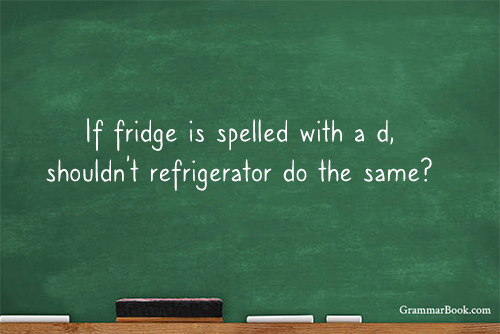|
"Would you bring me to the train station?"
"How much money are you taking to the concert?"
You've probably said, read, or heard such expressions. Bring and take are common verbs in English, and we use them often in our daily writing and speech. But are the questions above correctly conveyed?
Both verbs involve actions of movement. Many of us also might use them interchangeably, even if our applications are not precise: Most people will get the gist of what's being said. However, as attentive and careful communicators, we recognize the opportunity to be exact by upholding intended word meanings.
What's the Difference Between Bring and Take for Motion?
Stated most simply, bring expresses motion toward you, and take involves motion away from you.
Please bring my sweater to me.
Please take my sweater to my brother. |
Native speakers would quickly recognize the clashing sound of the alternate verb in the first example:
| Please take my sweater to me. |
We simply know it's not right.
In the second example, the distinction blurs a bit because of today's interchanging colloquial use:
Please bring my sweater to my brother.
Please take my sweater to my brother. |
These sound closer in tune compared with the first example's obvious dissonance. However, while we understand the core thought in both sentences, take would be the verb with greater precision.
The verbs can also have additional subtleties. Described further, to bring is to convey something or someone to a place or person, and to take is to transfer something or someone from one place to a different one.
Please bring me my beverage. (The beverage is being carried to me.)
Please take me to the train station. (I am being transferred from my current location to the station.) |
Now let's say you live in Boulder, Colorado. A supply truck is delivering sweaters to retail stores on its route, and Boulder is one of its stops.
If you write that the truck is bringing sweaters to Boulder, where you are, you are correct.
Suppose another person in another location—Provo, Utah—is making the same observation about the delivery. Would she also be correct if she said the truck is bringing sweaters to Boulder?
The outside observer is describing an action that involves movement away from her vantage point as opposed to toward it. The movement also concerns the transfer of items from one place to another one. To be accurate, the outside observer would therefore state the truck is taking sweaters to Boulder.
Let's consider another instance of movement to or away from a point. What if your friend asks how much money you are taking to a concert? Is this correct verb use?
It depends on where the concert is and who is going. If your friend will be at the concert, the motion will be toward the reference point and the friend as well as with the carrier (you), making bring correct: How much money are you bringing to the concert?
On the other hand, if your friend is referring to a concert at a distant point where he will not be, the motion is away from him, and it involves transfer from one place to another, so the correct verb is take: How much money are you taking to the concert?
If the difference between bring and take should ever still feel uncertain, continue to focus on the perspective of the speaker and the direction of the motion in context. Consider these sentences:
Take this disc with you.
Bring this disc with you. |
The speaker in both sentences is the first person (I). I am also giving a command to you (second person) in both.
In the first sentence, I am handing you a disc and telling you to convey it with you (and away from me) to another location. Take would be the correct verb since the motion will be away from me.
In the second sentence, I am handing you a disc and telling you to convey it in a direction I will also be headed. For example, maybe we are both going to a meeting where the disc will be used. You will therefore bring the disc with you.
Bring vs. Take in English: Other Uses
So far we've covered the distinction between bring and take as it applies to movement. Both words also have other uses throughout English according to additional meanings, including in phrasal verbs and idiomatic expressions.
Examples
Writing a book takes time.
Sarah took her daughter by the hand.
It might be a while before the idea takes root with them.
Take a right at the stoplight.
Bringing up a family involves both effort and joy.
Why did you have to bring that up?
Sometimes much perseverance is needed to bring about change.
The noise from the party soon brought the police. |
Related Topics
Commonly Confused Words That Bring Bumps to Writing
Commonly Confused Words Quiz
Diving Back Into Different From and Different Than
|





